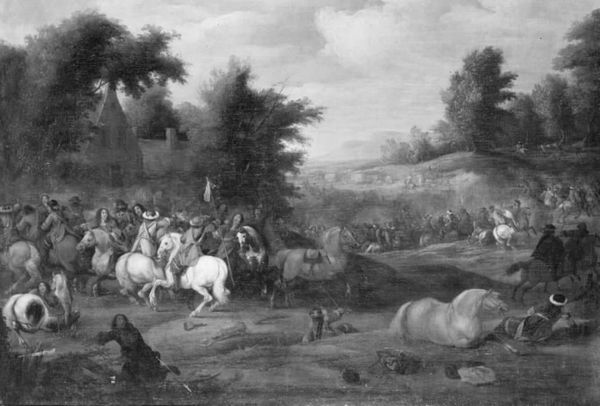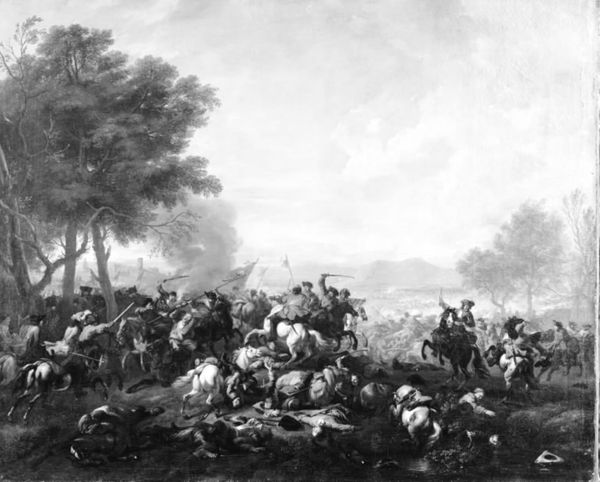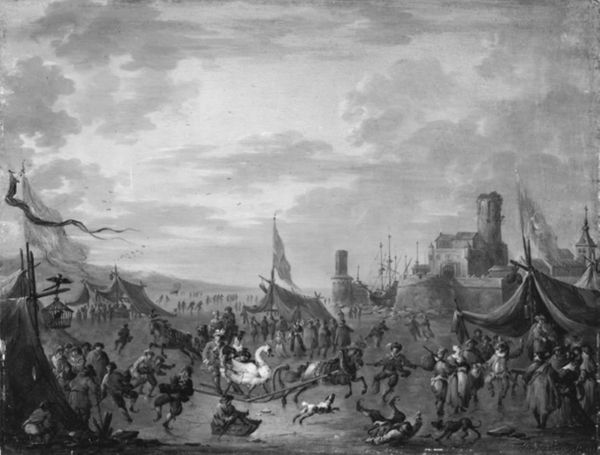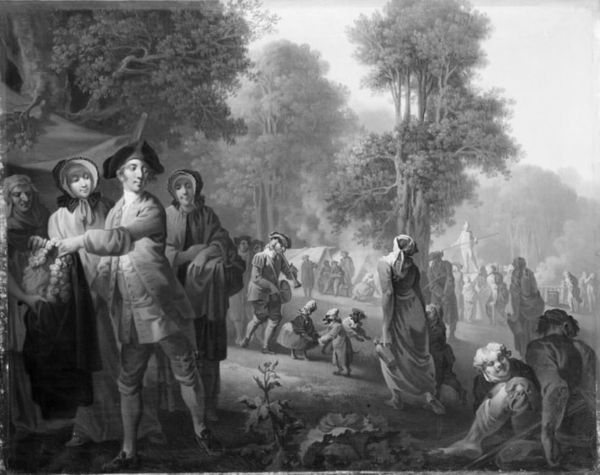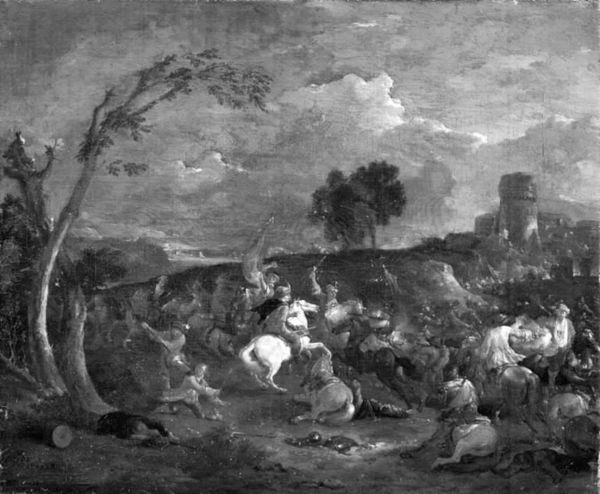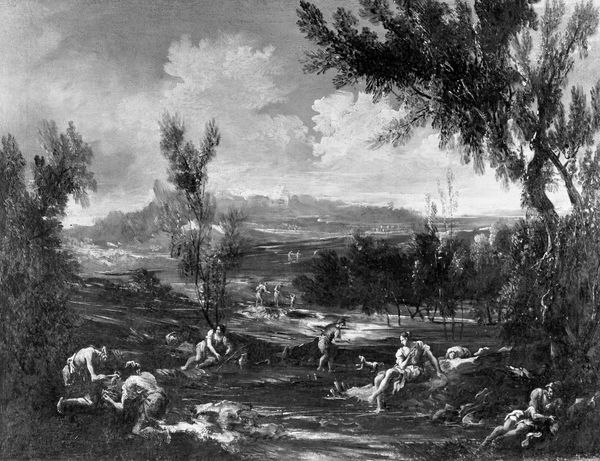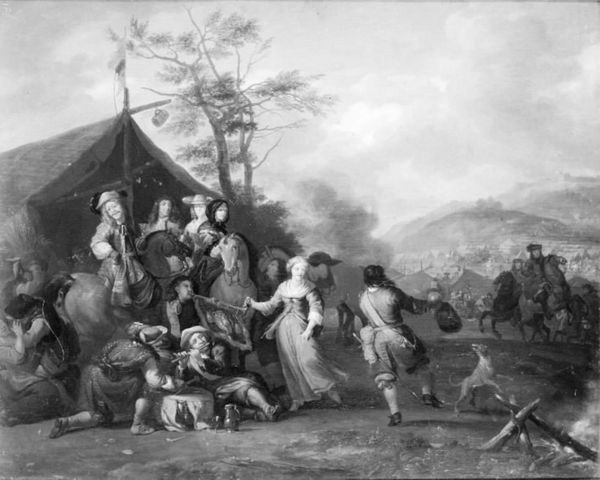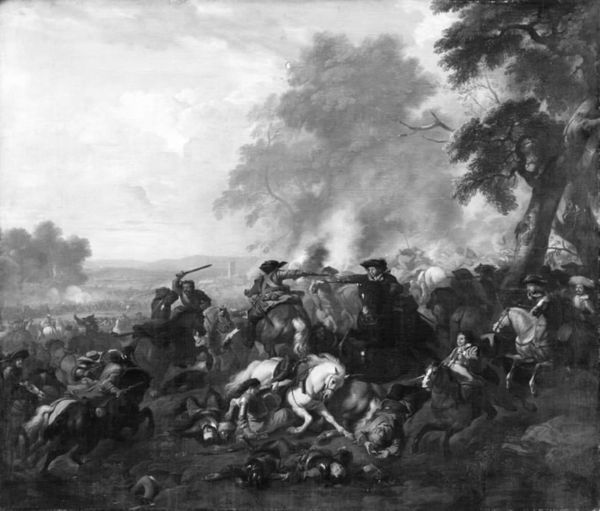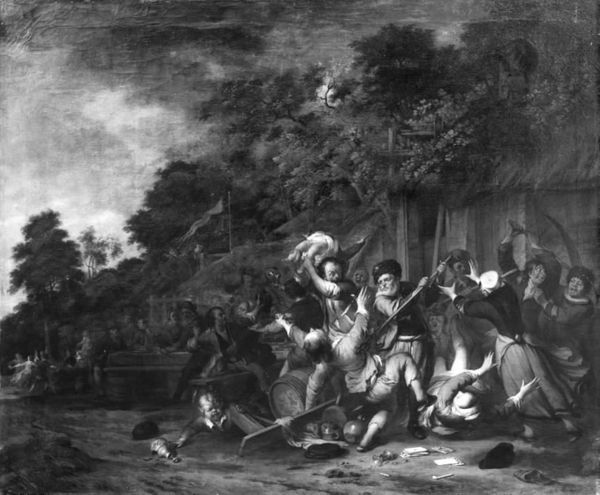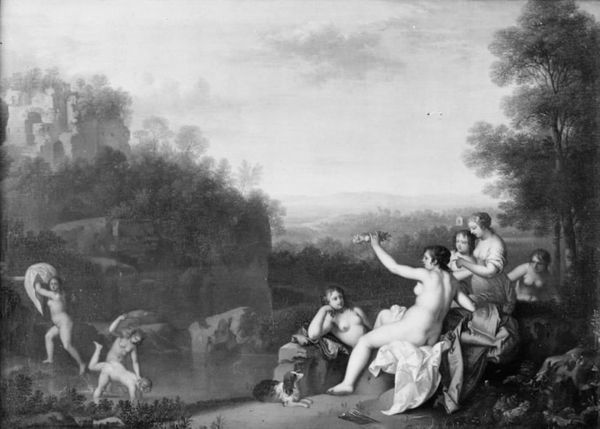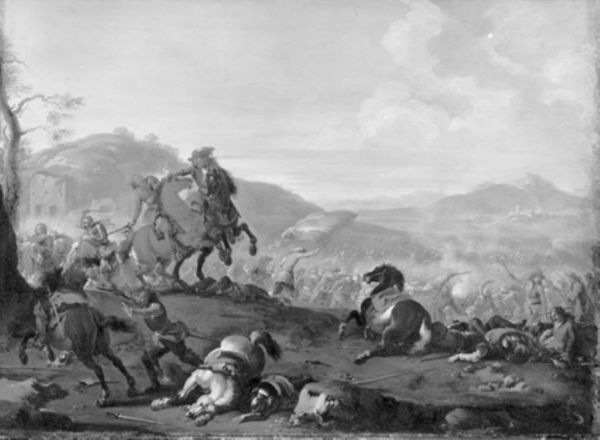
canvas
#
colorless
#
black and white photography
#
black and white format
#
monochrome colours
#
b w
#
canvas
#
black and white theme
#
black and white
#
monochrome photography
#
surrealism
#
monochrome
Dimensions: 83.5 cm (height) x 130.6 cm (width) (Netto)
Curator: I’m immediately drawn into this swirling chaos. It feels like a glimpse into the underbelly of… well, civilization. All the noise, confusion, and the sense of figures propelled forward—almost against their will. Editor: Indeed. This canvas by Herman Doncker, painted around 1636, titled "Skirmish between Horsemen and Foot-Soldiers," captures just that. A raw, almost visceral snapshot of conflict frozen in time. It’s oil on canvas. The lack of color contributes to a starkness. Curator: A starkness, yes! Like a nightmare rendered in shades of gray. The horses, particularly, are these monumental symbols of power trampling… what? Hope? Innocence? Editor: Perhaps. Horses often signify power, dominance, but also, uncontrolled instinct. Notice how the central horseman raises his weapon. It echoes a classic pose of triumphant authority, but here, set against the backdrop of sheer panic, it reads almost as a futile gesture. It certainly invites you to consider how images are often propaganda tools. Curator: Futile is exactly the word. The entire scene is unbalanced, unresolved. Even the trees in the background seem to lean into the fray, adding to the overall sense of unease. Is that really an accurate portrayal of violence or something... deeper? Something universally haunting? Editor: Possibly both. Consider the psychology of war, the individual subsumed by the collective frenzy. The anonymous foot soldiers, faces obscured, are stripped of their individual identity. Are they heroes or victims? Hard to tell here. They reflect the artist’s nuanced exploration of conflict as both spectacle and psychological drama. The very absence of color amplifies this sense of a loss or void. It reminds us how conflict has always involved stripping people and the world around them from essential qualities of themselves. Curator: You've nudged me to think how Doncker must have perceived conflict, too. There’s an understanding—or maybe a fear—present that lingers with you even after you turn away from the artwork. Editor: Ultimately, the artist prompts reflection on the visual symbols and emotions around conflict. Curator: This image haunts but illuminates. It's a kind of uncomfortable poetry of human folly. Editor: Precisely. It compels us to question what resonates even now.
Comments
No comments
Be the first to comment and join the conversation on the ultimate creative platform.
